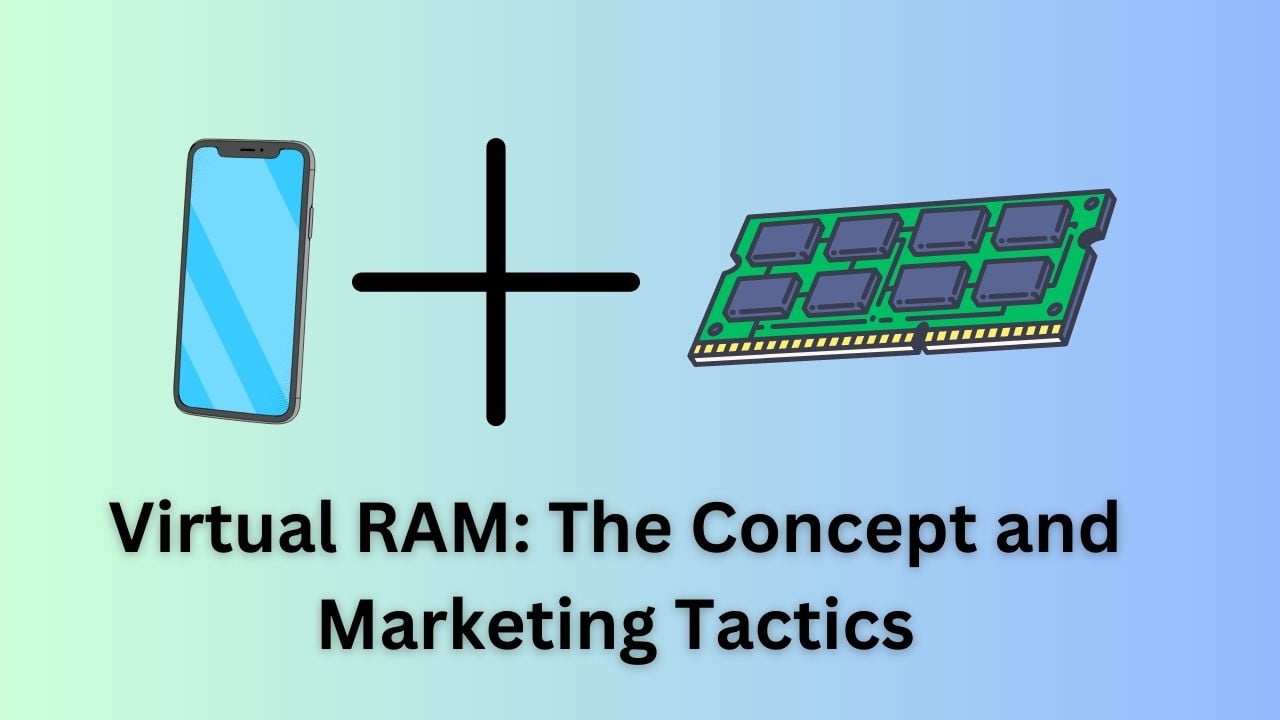
In the world of smartphones, terms like virtual RAM, dynamic RAM, extended RAM, and more are commonly used. However, these terms can be confusing, especially when smartphone brands employ marketing strategies to create the illusion of improved performance. In this article, we will demystify virtual RAM, explain its purpose, and discuss how smartphone brands market it. So, let’s delve into the topic!
What is Virtual RAM?
Virtual RAM, also known as virtual memory, is a memory management technique utilized by computer systems, including smartphones, to provide additional memory capacity beyond the physical RAM installed in the device. It allows the operating system to utilize a portion of the storage space as an extension of RAM when the physical RAM reaches its capacity. In simple terms, virtual RAM expands the effective memory capacity of a device.
The Evolution of Virtual RAM
The concept of virtual RAM has been in existence for a long time, predating smartphones. In older computer systems, virtual RAM was created by utilizing a section of the hard disk as temporary storage to hold data that exceeded the physical RAM’s capacity. This technique aided in preventing system crashes and facilitated the smooth execution of memory-intensive tasks.
Virtual RAM in Smartphones
In the context of smartphones, virtual RAM serves a similar purpose. When a smartphone’s physical RAM is running low, the operating system assigns a portion of the device’s internal storage to act as additional memory. This expansion enables the device to run more applications simultaneously and prevents excessive lag or app crashes.
The Marketing Game
Smartphone brands often leverage the concept of virtual RAM in their marketing strategies. They advertise smartphones with statements like “8GB RAM with 8GB virtual RAM” or “12GB RAM (6GB + 6GB virtual RAM).” These marketing tactics create the perception that more RAM equates to better performance. However, it is crucial to understand the reality behind these claims.
The Benefits and Limitations of Virtual RAM
Virtual RAM offers certain benefits in terms of multitasking and running memory-intensive applications. It enables users to keep more apps open in the background without experiencing significant performance degradation. However, it is important to note that virtual RAM cannot match the speed and efficiency of physical RAM.
Understanding RAM and Storage
To comprehend the distinction between RAM and storage, let’s use an analogy. Imagine your phone’s RAM as a table where you can quickly access files and data required for active tasks. On the other hand, storage, such as internal memory or ROM, is akin to a shelf in your living room where files are stored long-term. When you open an app, it’s like retrieving a file from the shelf and placing it on the table for immediate access.
Performance Comparison: RAM vs. Storage
The speed of read and write operations in RAM is significantly faster than in storage. RAM allows for rapid data retrieval and processing, resulting in smoother app performance. In contrast, storage, while offering greater capacity, cannot match the speed of RAM. This disparity in speed is why virtual RAM, which utilizes storage as an extension, cannot provide the same level of performance as physical RAM.
The Truth about Extra RAM
Smartphone brands often advertise devices with additional virtual RAM as a selling point. However, it is crucial to understand that the perceived benefits of this extra RAM are not as significant as they may appear. The marketing strategy can create confusion among consumers who focus solely on the RAM quantity without comprehending the underlying technology.
Read More
How Smartphone Brands Fool You? Read and Plan Before Buying the Latest Smart Phone Brands Models
Exciting Smartphone Launches in July 2023 : A Sneak Peek
Recommendations for Smartphone Brands
While virtual RAM can be a useful feature, smartphone brands should provide clearer explanations and refrain from employing misleading marketing tactics. Transparent communication regarding the benefits and limitations of virtual RAM would empower consumers to make informed decisions when purchasing a smartphone. Prioritizing honesty and offering accurate information to consumers is essential.
Conclusion
In conclusion, virtual RAM is a memory management technique that expands the effective memory capacity of a device by utilizing a portion of the storage as temporary memory. Although virtual RAM can enhance multitasking capabilities, it is important to recognize its limitations and understand that it cannot match the performance of physical RAM. Smartphone brands should prioritize transparent communication to educate consumers and ensure informed choices.
FAQ
Q1: Can virtual RAM enhance gaming performance on smartphones?
A1: Virtual RAM may provide a slight improvement in gaming performance by allowing the device to keep more game-related data in memory. However, the impact is not significant compared to the benefits of physical RAM or a more powerful processor.
Q2: Can I upgrade virtual RAM on my smartphone?
A2: No, virtual RAM cannot be upgraded independently. It is a feature determined by the operating system and the device’s hardware configuration. However, some smartphones may offer the option to expand physical RAM.
Q3: Should I prioritize virtual RAM or physical RAM when purchasing a smartphone?
A3: Physical RAM holds more significance for optimal performance. Virtual RAM can provide a temporary boost in multitasking capabilities but cannot replace the advantages of having sufficient physical RAM.
Q4: How can I check the amount of virtual RAM on my smartphone?
A4: Virtual RAM is managed automatically by the operating system, and users do not have direct control over it. However, you can check the total RAM (physical + virtual) in the device’s settings or through system information apps.
Q5: Does virtual RAM consume storage space on my smartphone?
A5: Yes, virtual RAM utilizes a portion of the device’s internal storage. However, the amount used is typically small compared to the overall storage capacity and does not significantly impact the available space for apps and files.
